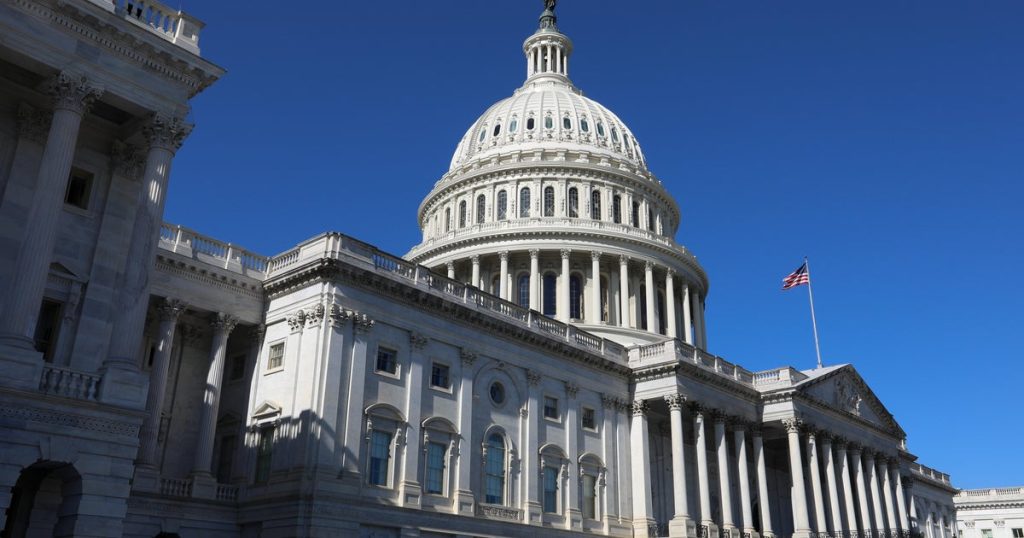In a significant political event, the House of Representatives faced a rare tie vote on February 2024, regarding the impeachment of Department of Homeland Security Secretary Alejandro Mayorkas. This tie vote, which ended in a 215-215 stalemate, revealed the potential issues tied to the slim Republican majority in the House. The passage of this impeachment resolution has potential implications for future legislative procedures, especially in the context of how tie votes are handled in a closely divided chamber.
| Article Subheadings |
|---|
| 1) The Background of the Impeachment Effort |
| 2) Understanding Tie Votes in the House |
| 3) The Procedure Following a Tie Vote |
| 4) Consequences of a Tie Vote |
| 5) The Implications for Future Legislation |
The Background of the Impeachment Effort
The impeachment proceedings against Secretary Alejandro Mayorkas emerged from mounting frustrations among House Republicans. The GOP has increasingly voiced concerns regarding the handling of border security and immigration policies under his leadership. As the situation at the U.S.-Mexico border escalated, with increased encounters and reports of humanitarian crises, calls for accountability grew louder. The impeachment effort aimed to address what many in the party viewed as failures to enforce immigration laws effectively. This push, however, faced opposition even within Republican ranks, signaling deep divisions among GOP members on the issue.
Understanding Tie Votes in the House
A tie vote in the House signifies a critical moment, particularly given the current dynamics where the Republican party holds a slender majority. When the House votes are tied, the rules dictate that the question at hand “shall be lost.” This means that neither side secures a victory and the matter remains unresolved. Unlike the Senate, where a tie-breaking vote can be cast by the Vice President, the House lacks such a mechanism. This structural difference can lead to standstills on significant legislative issues, further complicating the functioning of a closely divided chamber.
The Procedure Following a Tie Vote
Once a tie vote occurs, the immediate response involves assessing next steps. In this case, the resolution to impeach Secretary Mayorkas faced a swift resolution after a fourth House Republican changed his vote, effectively averting a total stalemate. This procedural move is often necessary in such scenarios and allows leadership to revisit the legislation at a later point. The absence of a tie-breaker means that the party leadership must develop strategies to maneuver through similar situations in the future.
Consequences of a Tie Vote
The implications of a tie vote extend beyond the immediate outcome of a single resolution. It highlights the critical nature of party loyalty, especially in a chamber divided by narrow margins. Such occurrences can embolden moderates on both sides of the aisle. Undoubtedly, the tied vote regarding Secretary Mayorkas will reverberate within Republican ranks as they attempt to maintain cohesion amidst differing viewpoints on immigration policies. Furthermore, it raises questions about the effectiveness of legislation moving forward, particularly if ideological divides continue to deepen.
The Implications for Future Legislation
With the specter of tie votes looming, future legislative efforts may shift in terms of strategy and approach. The Republican leadership must consider the fragility of their majority when navigating contentious issues. This experience serves as a reminder that one or two defections can undermine significant policy initiatives, possibly leading to legislative gridlock. As Congress grapples with pressing national issues, the need for bipartisanship and strategic negotiation becomes evident. The fallout from the impeachment proceedings against Alejandro Mayorkas will likely influence legislative agendas in the months ahead.
| No. | Key Points |
|---|---|
| 1 | The House faced a tie vote regarding impeachment, showcasing internal GOP divisions. |
| 2 | Tie votes in the House result in the question being “lost”, without a tie-breaking mechanism. |
| 3 | Procedural maneuvers can resolve tie votes swiftly, but unresolved issues may resurface. |
| 4 | The consequences of tie votes can embolden moderates and complicate future legislation. |
| 5 | Future legislative strategies may pivot due to the fragility of the current Republican majority. |
Summary
The recent tie vote in the House concerning Secretary Alejandro Mayorkas underscores the precariousness of the current political landscape in Congress. With a divided Republican majority, the party faces the challenge of maintaining cohesion while addressing pressing legislative issues. The procedural nuances of tie votes reveal significant implications for policy-making and governance. Moving forward, collaboration and effective negotiation will be vital as Congress aims to tackle critical national matters in the face of potential disruptions.
Frequently Asked Questions
Question: What happens when there is a tie vote in the House?
When there is a tie vote in the House, the question before the chamber is considered “lost,” and no resolution is reached.
Question: How do tie votes in the Senate differ from those in the House?
In the Senate, tie votes can be broken by the Vice President, whereas the House does not have a similar mechanism for tie-breaking.
Question: What are the implications of a tie vote for future legislation?
Tie votes highlight the challenges of partisan unity and can impede the passage of significant legislation, leading to potential gridlock.


